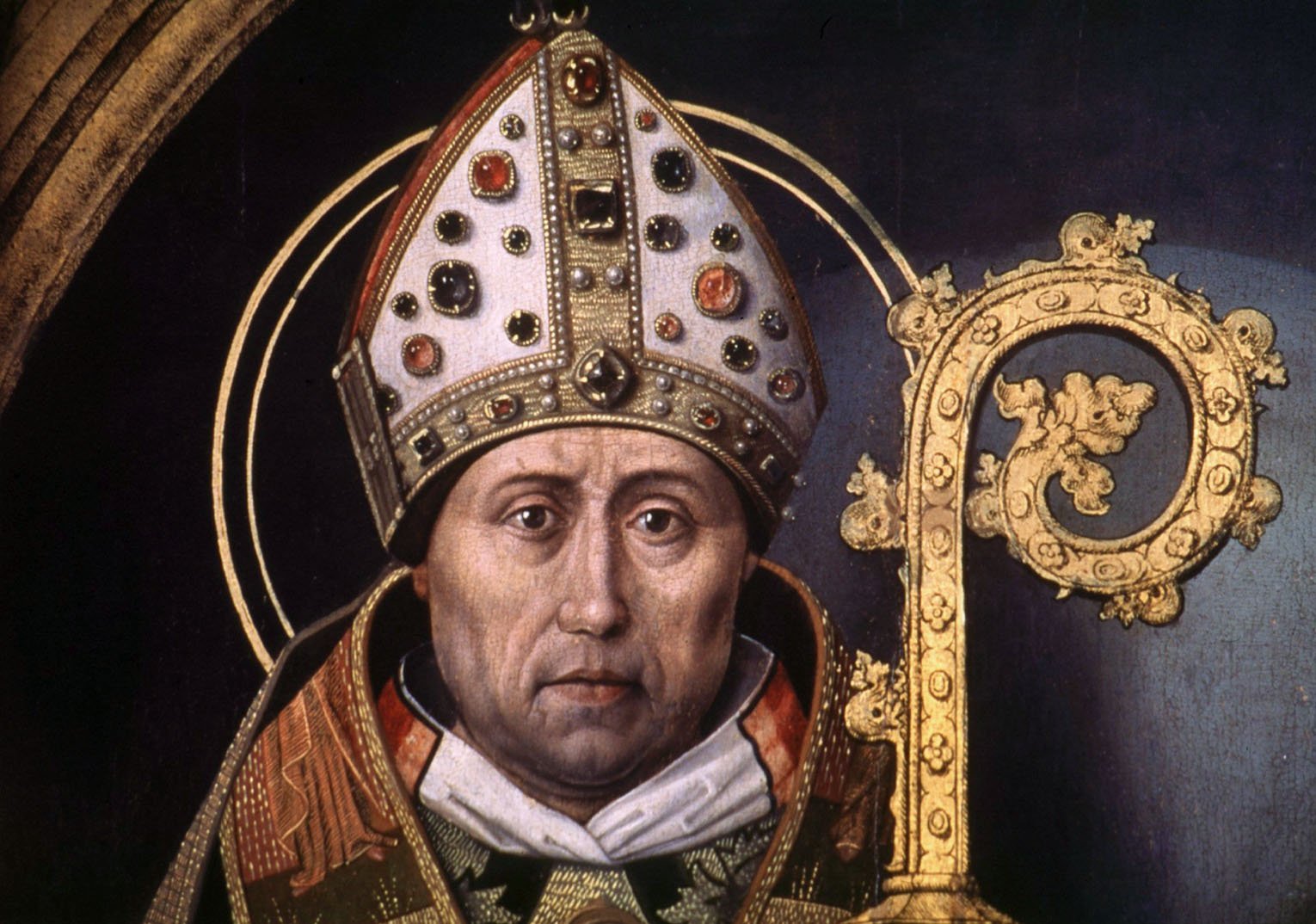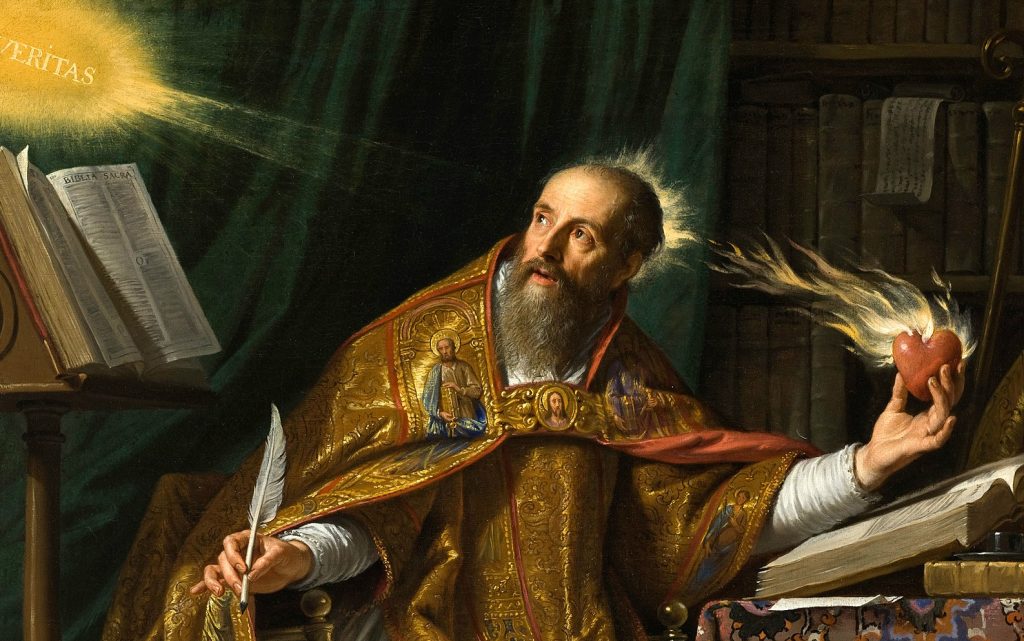“Augustinian” is the word most often used to describe the cast of mind of Pope Leo XIV. He used it himself in his first papal blessing on May 8: “I am an Augustinian, a son of St. Augustine.”
There are two senses to the word, and he fulfills both.
In one sense it means that he is a member of the Order of St. Augustine (OSA) — the Augustinians.
In a second sense, however, “Augustinian” denotes a distinctive approach to spirituality and theology. It means that the pontiff lives according to the principles of St. Augustine of Hippo, a North African who lived in the fourth and fifth centuries. More than a millennium-and-a-half after his death, he remains one of the most influential thinkers in all human history.
From Leo’s public statements — both before and after assuming the papacy — he is clearly an Augustinian in both senses.
As Robert Prevost, he professed his first vows in the Augustinian order in 1978 and solemn vows in 1981.
As Leo he quoted Augustine in his first public address, and he took a line of Augustine’s as his motto — the key to understanding his pontificate.
To understand the pontiff, then, we must first look into the life of and thought of his ancient patron.
•••
Augustine was born in 354 in a small town in Roman Africa (modern Algeria). His mother, Monica, was a Christian, and his father, Patricius, was a pagan, but not particularly religious. The family prized education, and Patricius begged and borrowed to find opportunities for his firstborn son.
The boy was intellectually gifted, but also rebellious. In his memoir, “The Confessions,” he recalls getting into mischief with his friends — stealing pears from his neighbor’s tree and then throwing them away.
At 17 he traveled to Carthage to pursue studies in rhetoric. There he indulged in a libertine college lifestyle. He moved in with his girlfriend and soon got her pregnant. He began to dabble in exotic religions and identified himself (though weakly) with the Manicheans, a Persian cult that was a mishmash of Christianity, Buddhism, and Zoroastrianism.
But his real religion was Augustine. He recognized his own potential to be the best in his field, and his ambitions led him first to Rome and later to Milan, which was then the administrative capital of the Roman Empire. At age 30 he held the most prestigious position in his field: the chair in rhetoric at the imperial court.
He had achieved his worldly goals, but he found them empty. They did not satisfy him. Nor did the Manichean religion, which could not withstand his scrutiny. He began to look elsewhere for meaning.
Augustine struck up friendships with Neo-Platonist philosophers in Milan, and some of them were Christians. He also began to attend the preaching of the city’s bishop, Ambrose, whose secular résumé had been every bit as impressive as Augustine’s.
Augustine found himself increasingly Christian in his thinking, but unable to let go of his strong attachment to sexual sins. One day — in extraordinary circumstances — he received God’s grace to prevail. He went forward for baptism and moved back to Africa with his friends.
One often overlooked prodigy of Augustine is his capacity for friendship. The companions of his misspent childhood followed him to Carthage, then Rome, then Milan, and then back to Africa.
Apparently, they could not imagine a life without him. Spiritually, they all grew together. In Africa, Augustine was soon ordained to the priesthood and then the office of bishop, and some of his friends followed his footsteps into the ranks of clergy and episcopacy.
Some, in fact, lived with him in a monastic household that lived by a “Rule,” which emphasized study, prayer, and the mutual love of charity.
In those days, a bishop spent busy days adjudicating disputes among his people. The bishop’s court was an alternative court of law. But Augustine still found time to write and produced over a hundred works, many of which are still considered required texts in specialized fields: trinitarian theology, morals, the theology of history, biblical interpretation, and catechetics, to name a few. He is the Church Father who has left us the greatest number of works, filling 46 fat volumes in their latest English translation.

His genius was recognized by his contemporaries. Pope Celestine I, who was reigning at the time of Augustine’s death, warned Catholics not to speak a word against the man or his doctrine. Pope Leo the Great, who assumed the papacy soon afterward, was intellectually formed by the man’s theology.
And his influence has never diminished. Augustine is the author (outside Scripture) most quoted by St. Thomas Aquinas in his authoritative “Summa Theologica” (“Summary of Theology”) from the 13th century. He is also the author (outside Scripture) most quoted in the “Catechism of the Catholic Church,” published in 1992.
•••
Such was Augustine’s genius that his thought became — without exaggeration — the Western Church’s spirituality at its most foundational. It is Latin Christianity’s default mode.
So what is it that makes Augustine’s spirit distinctive?
It has a quality of interiority. His “Confessions” are often cited as the earliest example of the genre of autobiography. In his “Soliloquies” he further pursues this self-scrutiny, seeking to know himself in relation to God.
It emphasizes community. Augustine is introspective, but not introverted. Living with others provided him occasions for exercising charity and mutual assistance. His companions helped him to see his faults and correct them.
It values creation. Augustine believed that God created the world to serve and delight human beings. Our desire for earthly goods should lead us to God, who alone fulfills our deepest desire. When we prefer lesser goods to God, we sin.
It is biblical and ecclesial. None of the ancients articulated the principles of Scripture study as clearly as Augustine. Yet he emphasized that the Church precedes the New Testament and authorizes Scripture by establishing the canon. For Augustine, the abiding authority on earth resides with the bishops in union with the pope.
It sees life as a journey, a process of conversion, either toward God or away from him.
After quoting Augustine in his first blessing, Leo brought many of these themes together as he said, “In this sense, all of us can journey together toward the homeland that God has prepared for us.”
Where did the Augustinians come from?
In the 13th century, there was a movement to gather independent monasteries together into religious orders. The “Hermits of St. Augustine” were one such aggregation, formed out of groups of hermits in Italy who had already been following the “Rule of St. Augustine.” They were approved by Pope Alexander IV in 1256. Eventually, they shed the word “hermit” from their name, as their work was both active and contemplative.
Down the centuries Augustinians have had a profound influence on the development of spirituality.
Among their members were the Spaniard Luis de Leon (16th century), who advanced the cause of publishing theology in vernacular languages, and Pierre de Bérulle, (16th and 17th centuries), who founded the so-called “French School” of spirituality and whose disciples included St. Vincent de Paul and St. Francis de Sales. Among the order’s many saints and blesseds are Blessed Ann Catherine Emmerich, St. Rita of Cascia, and St. Thomas of Villanova (namesake of the university in Philadelphia).

